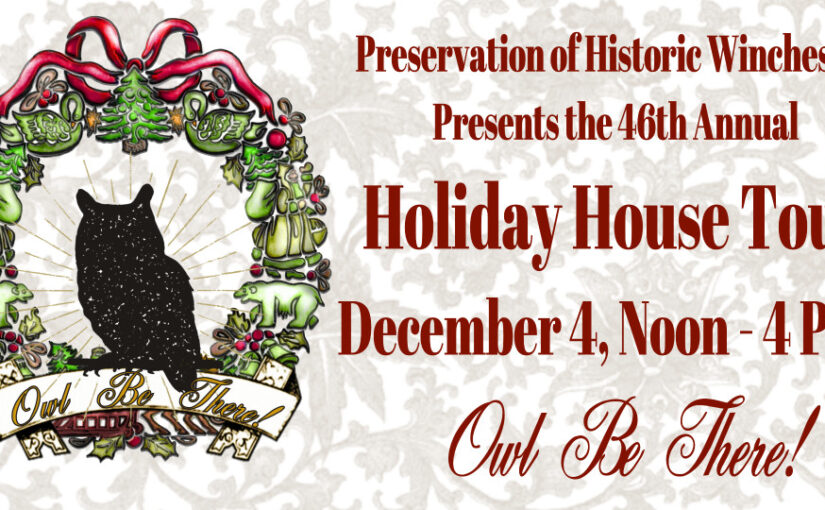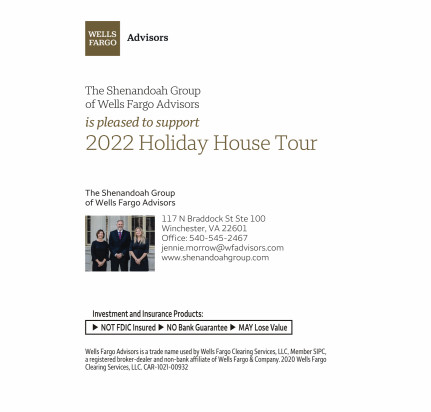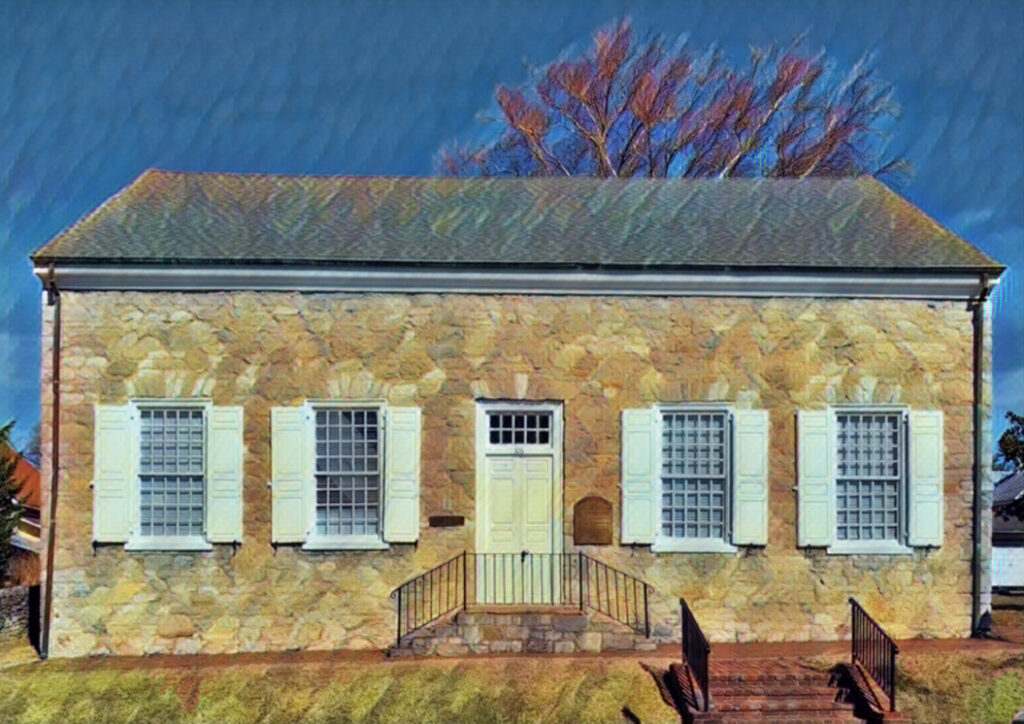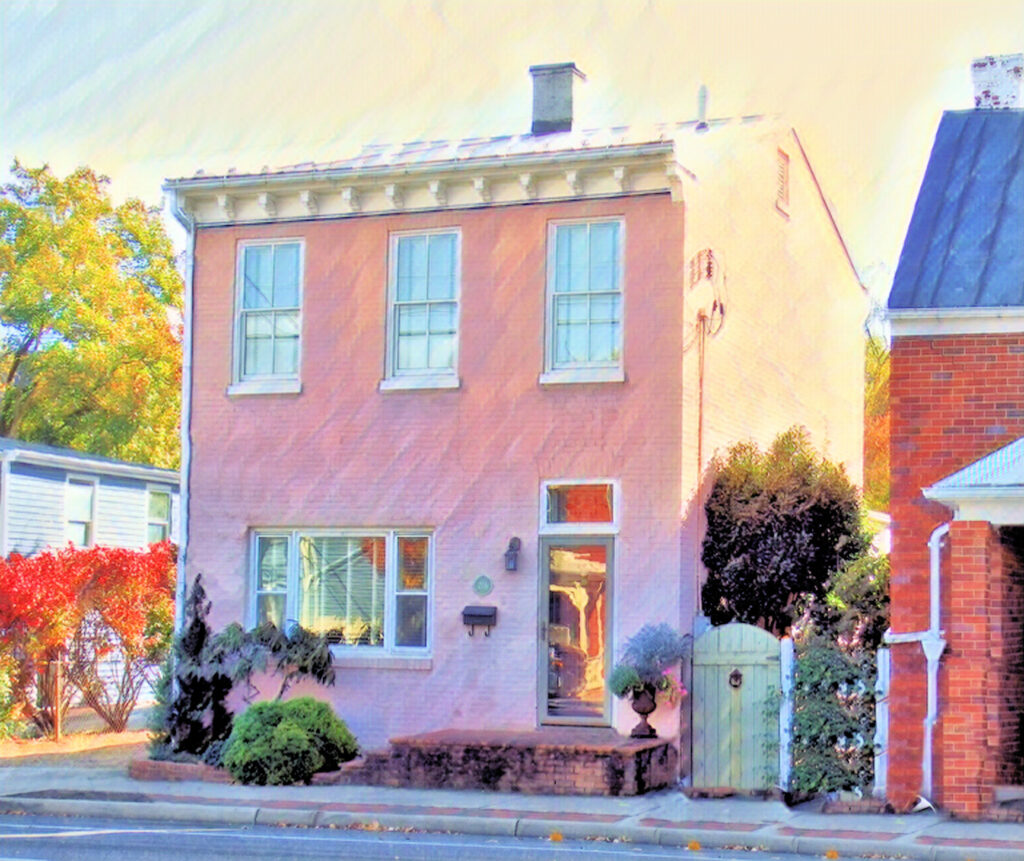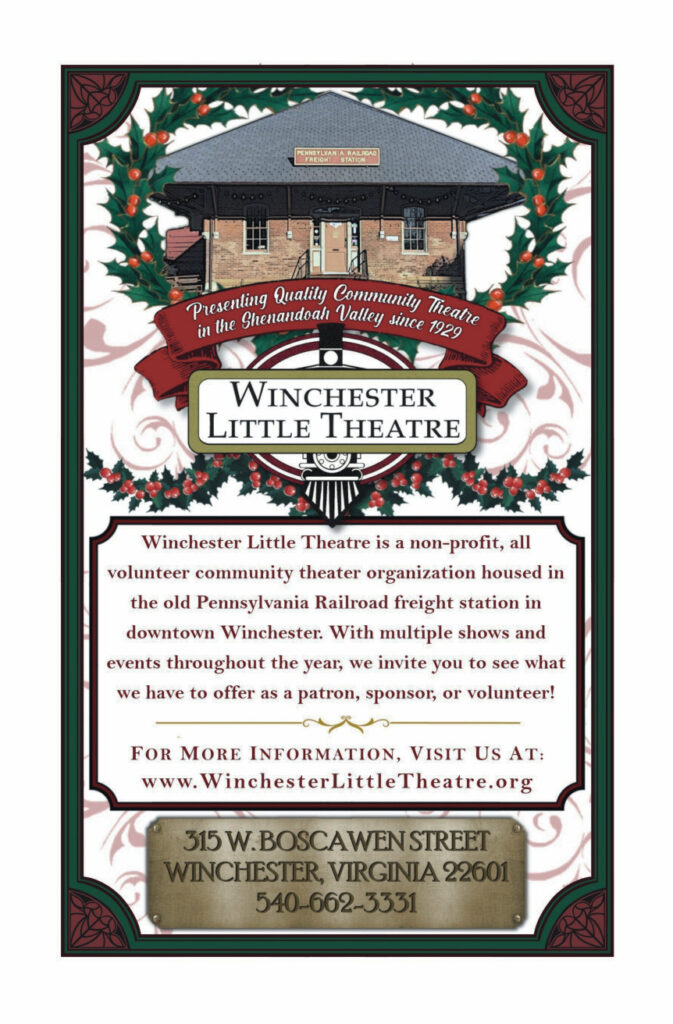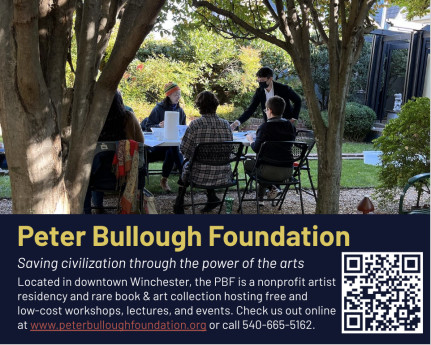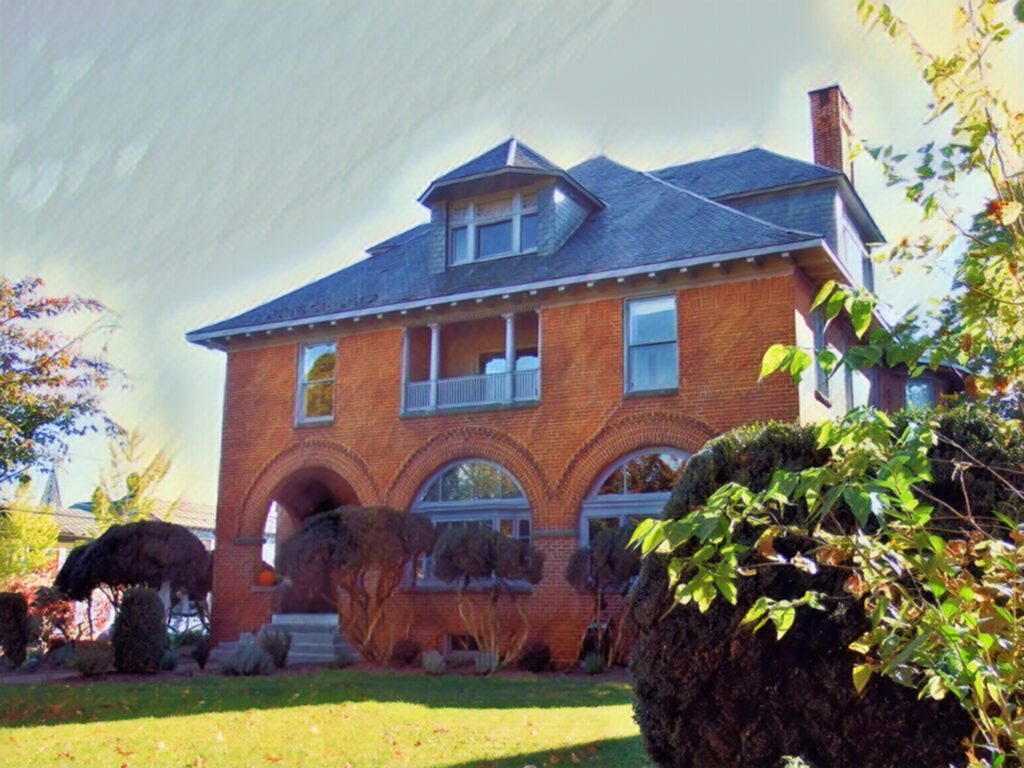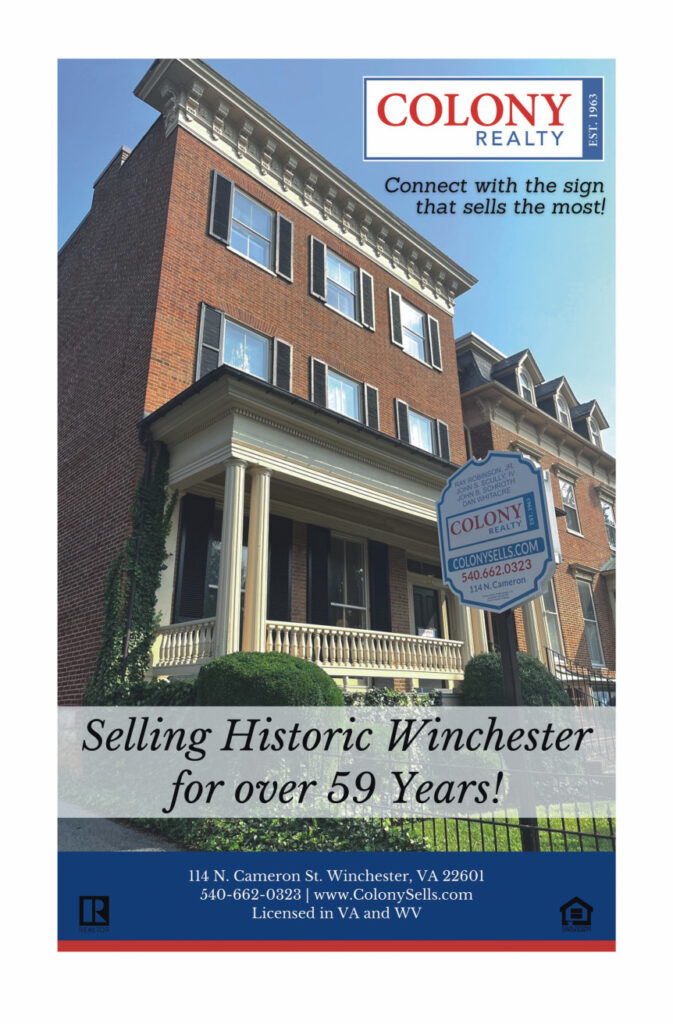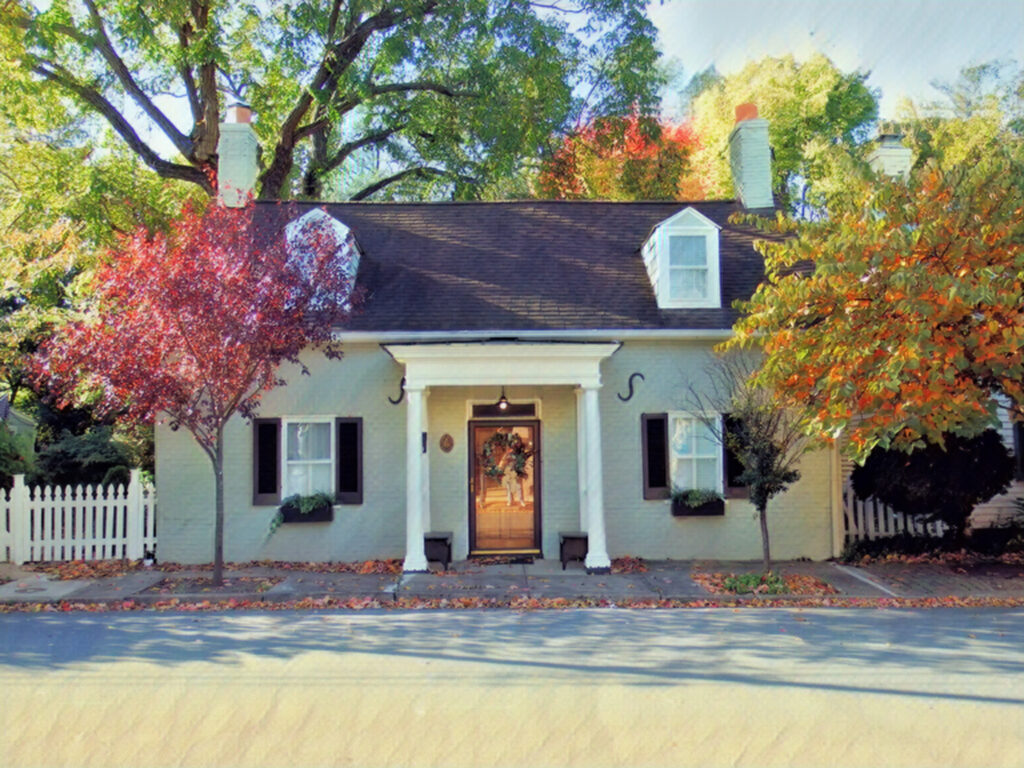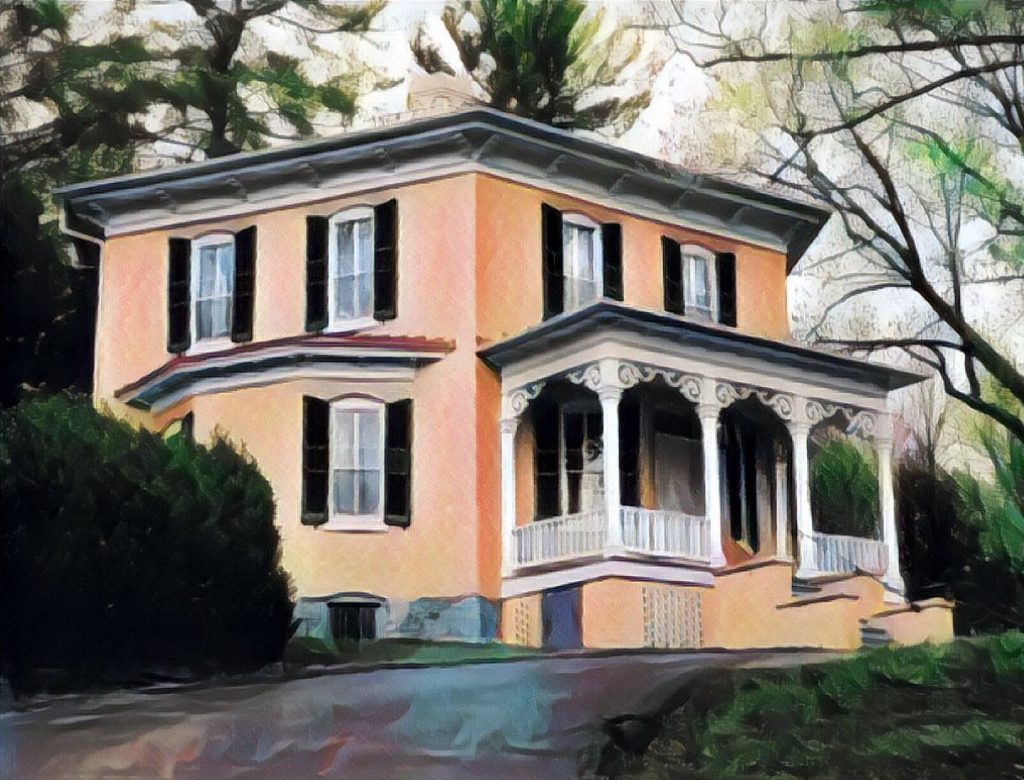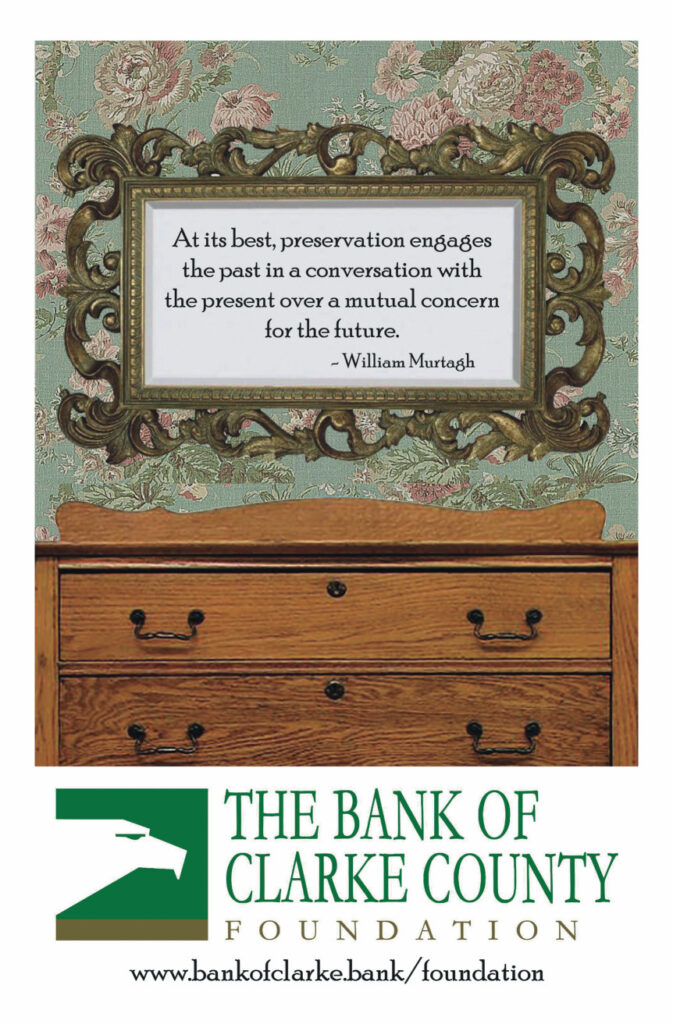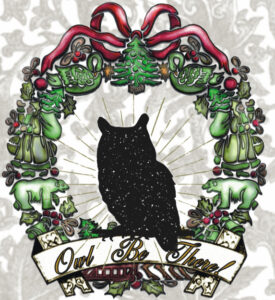If you’re looking for more things to do this holiday weekend and into early December besides the Bough & Dough Shop (open now through December 11 at the Hexagon House) and the Holiday House Tour (December 4, noon-4 PM), here are a few ideas:
This weekend is Windependent Weekend, which combines Plaid Friday and Small Business Saturday into a weekend event. Shop locally and support small businesses! Find more info at Old Town Winchester.
Winchester’s Holiday Parade and Tree Lighting Ceremony will take place November 28 at 7 PM. Hosted by Winchester Parks and Recreation (WPRD), the parade begins at 7 pm and typically features floats, bands, and vehicles representing local organizations. Santa himself will most certainly make an appearance, too! The annual tree lighting will take place immediately following the parade on the Loudoun Street Mall by the Old Frederick County Court House.
The Peter Bullough Foundation invites you to a special research lecture with Anna Abhau Elliot on December 1, 6-7 PM at the Handley Library in Winchester. She will share the fruits of her research from her time at the Peter Bullough Foundation artist residency in downtown Winchester. Anna’s work blends theatre, history, performance art, and comedy to explore how Americans tell each other stories. This event is free and is generously sponsored in part by First Bank and the Marion Park Lewis Foundation for the Arts.
Abram’s Delight will be open for their annual candlelight tours on Dec 2 from 6-8 PM and Dec. 3 from 3-7 PM. Guests are invited to view the exhibit “Quaker Families of Winchester and Frederick County in the nearby Hollingsworth Mill, and a demonstration of hearth cooking will take place in the log cabin. Admission is free! For more information, call 540-662-6550.
Last, we want to extend our special thanks to the Godfrey Miller Center for helping us host our caroling team for the Holiday House Tour this year. While you are enjoying the Holiday House Tour on December 4, you can also stop in to their building at 28 S. Loudoun St. for an art show – see the details below!


